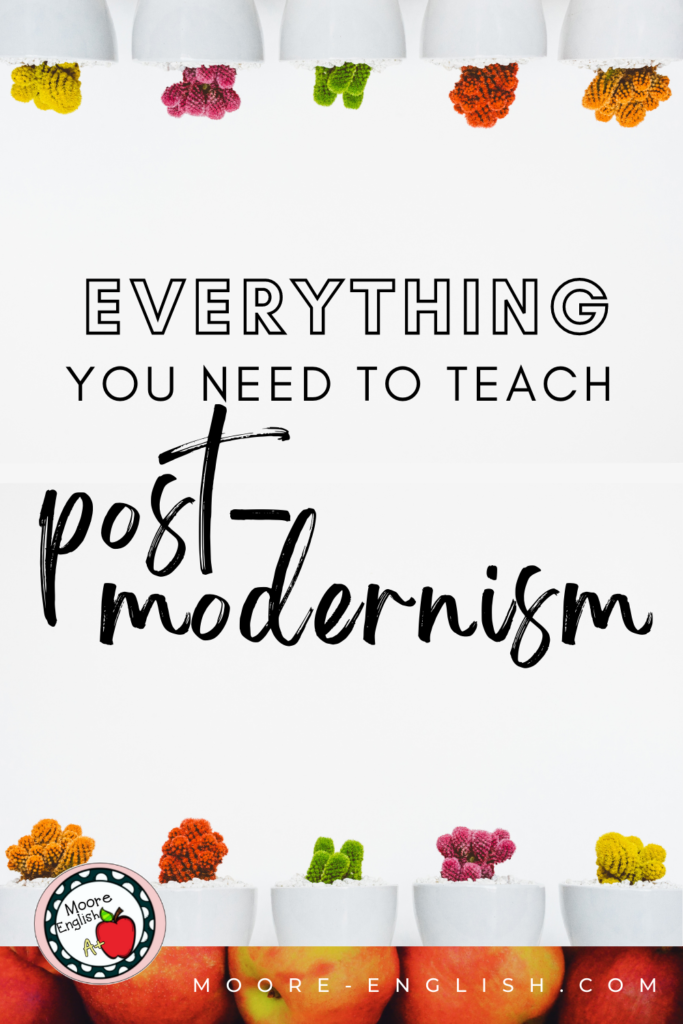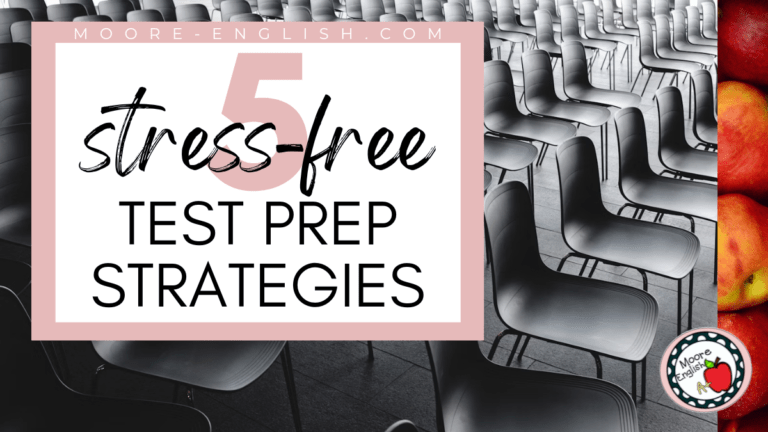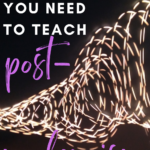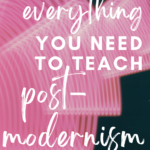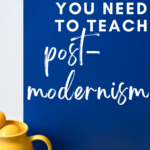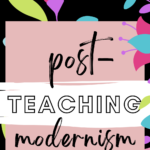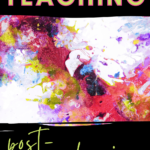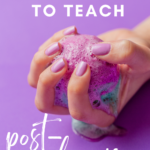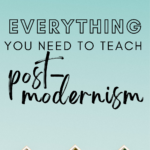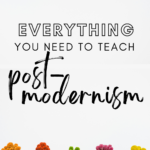My junior English class is focused on the progression of American literary movements, including a study of post-modernism. To introduce post-modernism, I ask students to think about their independent reading books. With those books in mind, I ask them to answer the following questions:
- Does your book have anything in common with texts from the American Enlightenment?
- Which elements, if any, of American Romanticism appear in your text?
- What does your book have in common with American Realism?
- How does American modernism appear in your book?
I like this activity because it helps students connect our classroom study to their personal reading. Ultimately, most students find that some literary movements come through more strongly. For example, the Romantic emphasize on individual spirit is pretty common.
However, no student has ever been able to check off all the elements of a particular literary movement in their book. With this in mind, I then ask students to answer these questions:
- What role does emotion play in your reading?
- Does your book begin with a trigger warning?
- In what ways are the characters in your book diverse?
- Does your book provide any political or social commentary?
- Do you think your book will have an optimistic or pessimistic ending?
- Does your book experiment with any new techniques like including screenshots?
- Does your book fit any of the following categories: graphic novel, dystopian, or Young Adult?
Students usually can check off at least two of these elements. From here, I introduce this acronym to help students remember the characteristics of post-modernism.
This post this post may contain affiliate links. Please read the Terms of Use.
Introducing Post-Modernism
To introduce post-modernism, I often use the poem “I Have a Time Machine” by Brenda Shaughnessy and pair it with the first ten minutes of a TED talk of the same name. This poem engages students because it has an honest voice. The idea of a “time machine” is such a relatable metaphor that students usually engage with the text. Read the poem here.
From the perspective of teaching students about post-modernism, this poem works for a few reasons:
- First, the poem clearly has a strong emotional component.
- Second, the time machine metaphor means the poem is forward looking, one of the key differences between modernism and post-modernism.
- As Shaughnessy discusses in the TED talk, she conceptualizes poetry as a restorative practice, which means her work is self-aware.
- Additionally, the poem provides social commentary about relationships and identity.
- Finally, the poem doesn’t check all the boxes of post-modernism. Early in our discussion of post-modernism, I try to help students recognize that post-modernism is such a diverse literary movement that few texts check every box.
The Structure of Post-Modernism
Perhaps more than any other literary period, post-modernism sees authors experiment with form and style. With this in mind, I put together a collection of poems that experiment with structure in meaningful ways.
- First, “Courage” by Anne Sexton represents Confessional poetry, a movement that bridges modernism and post-modernism. Sexton’s writing clearly draws on emotion and tries confessional techniques. The structure also shows Sexton experimenting with form. Read it here.
- Similarly, “Deer Dance Exhibition” by Ofelia Zepeda uses the structure of an impromptu Q & A. The structure is one mark of post-modernism, but the poem also provides social and political commentary. The poem is also aware of its ability to change a reader’s perception of Native American and Indigenous cultures. Read it here.
- Finally, “One-Word Poem” by David R. Slavitt has a self-awareness that exemplifies post-modernism. The idea of a one-word poem is so audacious that the text could only represent post-modernism. Read it here.
Increased Diversity
Unlike previous American literary movements, diversity is one of the strengths of post-modernism. Post-modern writing not only speaks to students’ lives and concerns but can also help students find themselves in literature. Consider some of these poems as a way to incorporate diverse and living poets in the classroom.
- To begin, “December” by Jaquira Diaz has a unique structure, draws on emotion, and provides social commentary. It’s also a poem from a Latinx author, so this poem is a good way to incorporate post-modernism. Read it here.
- Next, “Social Distancing” by Juan Felipe Herrera resonates with students because of its subject matter. The concrete sunburst style of the poem represents post-modernism as does the poem’s awareness of literature’s ability to provide comfort. Read it here.
- Additionally, “Us vs Them” by David Tomas Martinez experiments with structure and provides social and political commentary. This is one of the first poems students read in class that uses explicit language, which is another clear mark of post-modernism. All of my resources for this poem are here.
- Finally, “We are Not Responsible” by Harryette Mullen is one of the last poems we read. I like to save this poem for later in our study of post-modernism because students often struggle with satire. This poem has a high degree of self-awareness. Plus, this is a good way to bring a living Black poet into your classroom! Read it here.
Grab all of these poems in my Post-Modernism Bundle!
Further Reading
Since literary periods play an important part in my junior American literature class, I’ve written a lot about the subject!
- How To Engage Students In Studying The American Enlightenment
- American Enlightenment Pacing Guide and Unit Bundle
- American Romanticism Unit Bundle and Resources
- Everything You Need to Teach Romanticism
- Everything You Need to Teach Regionalism
- American Literary Movements
- Regionalism Collection
- Modernism Collection
- Post-Modernism
- Realism Notes

